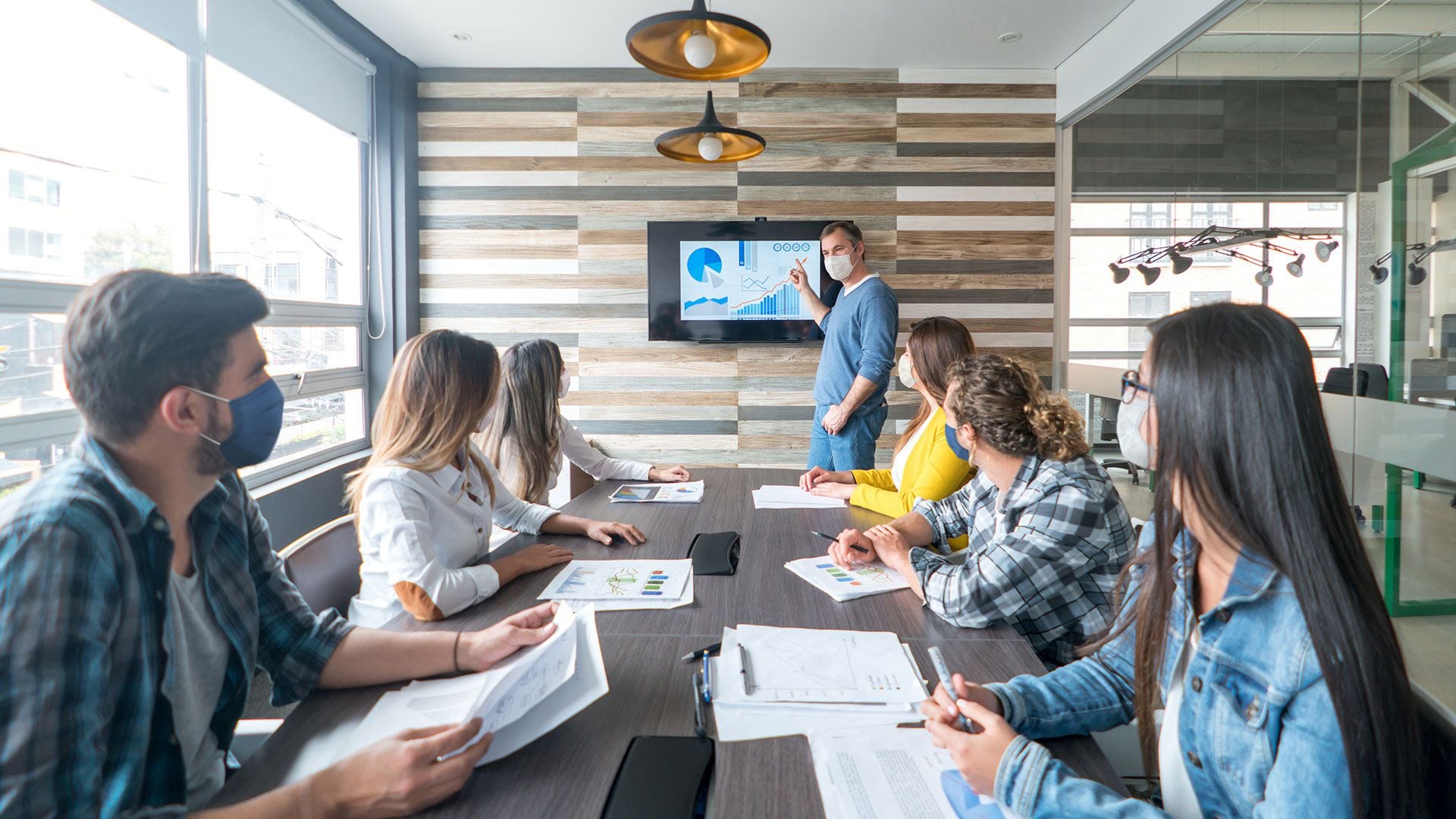
Getting sick more than 2 times with the coronavirus is possible. It is even more likely if people are not fully vaccinated, or if it has been a long time since the last dose or if they have developed a severe condition. Today, the pandemic continues with the circulation of the Ómicron variant, which, being highly transmissible, increased the risk of people having COVID-19 again. But it is known that having the full vaccine schedule and the booster there is less chance of re-infection.
In Italy, the Higher Institute of Health released the latest records of cases of re-infection. It determined that 3% of the total number of those infected had already had the coronavirus before. They are people who got the infection again more than 90 days after they had it.
In the latest Integrated Surveillance Bulletin, the Italian institute reported that 264,634 cases of re-infection were reported from August 24, 2021 to March 16, 2022. In the last week, the percentage of re-infections out of the total number of reported cases was 3.2%, stable compared to the previous week.
In the United Kingdom, the Office for National Statistics also recently reported that the risk of re-infection was 16 times higher when Ómicron became the dominant variant in that country, compared to the period when Delta dominated. It has already been found that the variant is able to bypass the immune responses of the organism to a significant extent.

Also in Argentina, the wave due to the Ómicron variant of the coronavirus produced an increase in re-infections like never before since the beginning of the pandemic. As reported to Infobae in February by the Ministry of Health of the Nation, people who were diagnosed with COVID-19 and who became infected again accounted for 1.5% of cases confirmed from March 2020 to December 10. But people with re-infection accounted for 13.2% of all confirmed infections from 2022 to 6 February.
Experts in genomic surveillance and epidemiology have given different reasons to explain the increase in re-infections. According to the World Health Organization, the Omicron variant is composed of several genetically related sublineages, including BA.1, BA.2 and BA.3. Globally, BA.1 has been the predominant lineage of Ómicron. However, the proportion of sequences reported with BA.2 has increased relative to BA.1 in recent weeks, and is the predominant sublineage of Ómicron in several countries.
The BA.1 and BA.2 sublineages have some genetic differences, which may make them antigenically distinct. Reinfection with BA.2 after BA.1 infection has been documented. However, “initial data from population-level studies suggest that BA.1 infection provides protection substantial against re-infection with BA.2, at least for the limited period for which data are available,” the health agency reported.

Another factor is the Ómicron variant - in any of the sublinages - it is much more contagious than the previous ones such as Delta. This feature increases the risk of its ability to re-infection: “Each variant potentially has in itself a different infection capacity, which may be greater or lower,” explained Mario Clerici, immunologist at the State University of Milan.
“The thing is that each variant tries to evade antibodies and many people are becoming infected with Omicron despite being vaccinated, because all the vaccines in use are based on the Wuhan virus that circulated two years ago in China,” he said.
Another factor that can affect reinfections is the amount of antibodies that the variants manage to produce in the person who then recovers. A study that has just been published in the scientific journal Cell showed that Omicron reinfections induce an antibody response one tenth less than that of the Delta variant and one third less than that of a vaccine booster. Researchers explain that this would mean “less protection against re-infection or infection with future variants”: in practice, those infected with Ómicron tend to be less protected against future infections.
It is also known that there are people who are more susceptible to infection have been investigated. An international study coordinated by the Humanitas Institute and the San Raffaele Hospital in Milan identified a mechanism of disease resistance that helps explain why some people are less susceptible to the effects of infection. There are also people in whom vaccines do not produce antibodies, or very few, so-called “fragile” antibodies for whom a fourth dose.

Here is a review of the 11 practical recommendations developed by the US Centers for Disease Control and Prevention (CDC) to prevent re-infection:
1- Get vaccinated against COVID-19 as soon as you are summoned. This includes the booster or the third dose
2- Wear the mask correctly, tightly fitting and covering the nose and mouth. The idea is to breathe through the fabric
3- Maintain social distance of at least 1.5 meters
4- Avoid being among many people
5- Avoid poorly ventilated interior spaces. The general criteria of the experts say that, in the case of holding meetings with non-cohabiting people, ensure that they take place in open spaces or indoors with permanent cross ventilation, that is, by opening doors and windows on both sides of the room or in different environments to favor air circulates and renews itself, thus allowing an effective sweep of space.
6- It is important to be informed when it is necessary to be tested and when not. The rules have been amended over the course of the days by the health authorities both for cases with symptoms and close contacts.
7- Wash your hands frequently using soap and water and dry them well. If soap and water are not available, disinfectant with 60% alcohol can be used.
8- The CDC also recommends that people who are infected, especially by Ómicron, clean and disinfect their own personal objects and the surfaces they use. The US health authorities indicate that, if that is not possible because the person must stay in bed, that the cleaning person should wear a mask correctly. The sick person should also put on a mask. At the same time, doors and windows must be opened to generate cross ventilation.
The dishes and utensils of the person who is sick should then be washed with soap and hot water or in the dishwasher. And the person who handles them should wash their hands after collecting the patient's utensils as well as after throwing away the garbage with the sick person's waste.
If the patient is already recovered, the CDC advises waiting “several hours” before cleaning and disinfecting. If done in less than 24 hours, you must enter the room and bathroom with a mask and the windows open to clean and disinfect.
9- The CDC indicates that, in the event that cleaning is carried out between 24 hours and 3 days after the patient's recovery, it is not necessary to disinfect, it is sufficient to clean the surfaces of the areas used by the sick person. And if more than 3 days have passed, there is no need for any additional cleaning tasks, beyond the routine one, in the areas used by the sick person.

With regard to cleaning, the health authorities recommend that carpets, curtains and upholstery be sanitized with hot soapy water or with special cleaning agents for these surfaces and dry them completely. The use of the vacuum cleaner also carries a recommendation: if you pass through the room of a sick person or where you were 24 hours before your recovery, you should wear a mask.
10- As for the washing of clothes, which includes sheets and towels, it is advisable to put the water at the maximum permissible temperature and dry them completely. If you are going to handle dirty clothes of a sick person, gloves and a mask should be worn. After that, you should not forget to clean the laundry baskets and wash your hands.
11- It is also important to take care of items such as the toothbrush. Although it is common sense, it should be remembered that in order to avoid infection of any virus, toothbrushes should not be shared or kept in the same place with the heads attached.
KEEP READING:
Últimas Noticias
Debanhi Escobar: they secured the motel where she was found lifeless in a cistern
Members of the Specialized Prosecutor's Office in Nuevo León secured the Nueva Castilla Motel as part of the investigations into the case

The oldest person in the world died at the age of 119
Kane Tanaka lived in Japan. She was born six months earlier than George Orwell, the same year that the Wright brothers first flew, and Marie Curie became the first woman to win a Nobel Prize

Macabre find in CDMX: they left a body bagged and tied in a taxi
The body was left in the back seats of the car. It was covered with black bags and tied with industrial tape
The eagles of America will face Manchester City in a duel of legends. Here are the details
The top Mexican football champion will play a match with Pep Guardiola's squad in the Lone Star Cup

Why is it good to bring dogs out to know the world when they are puppies
A so-called protection against the spread of diseases threatens the integral development of dogs




